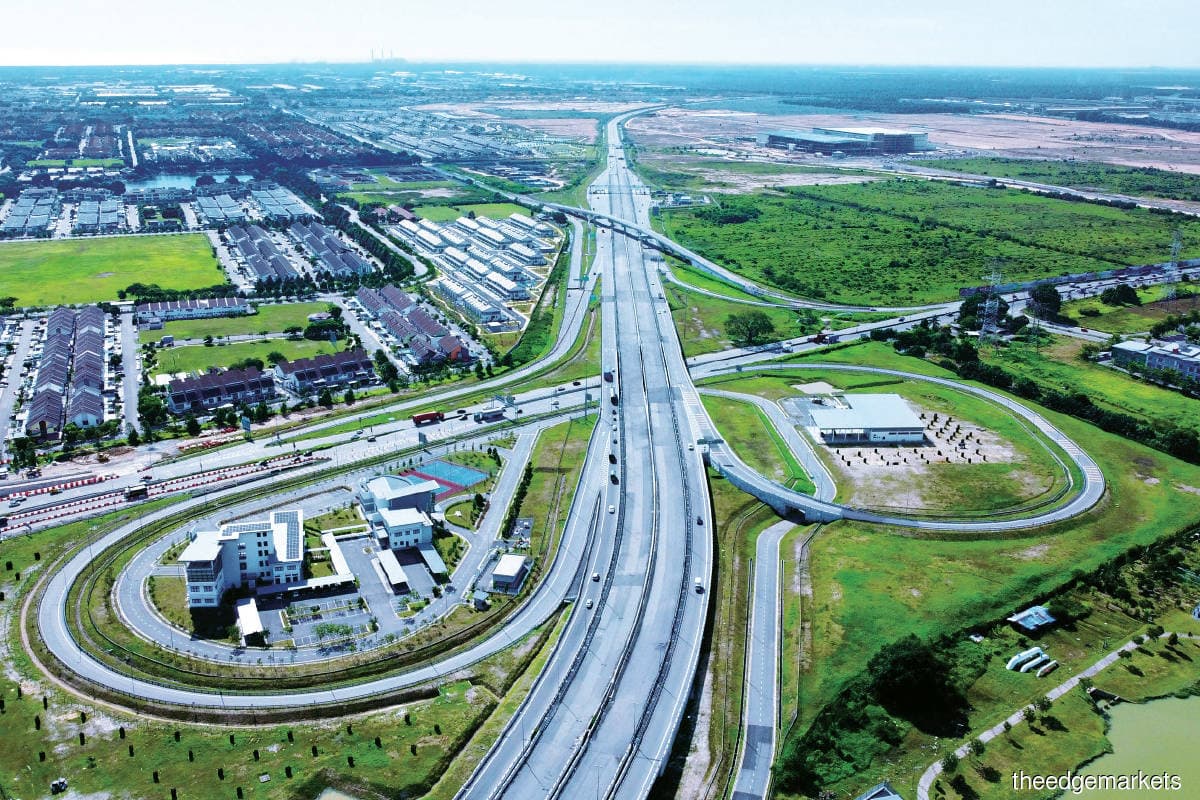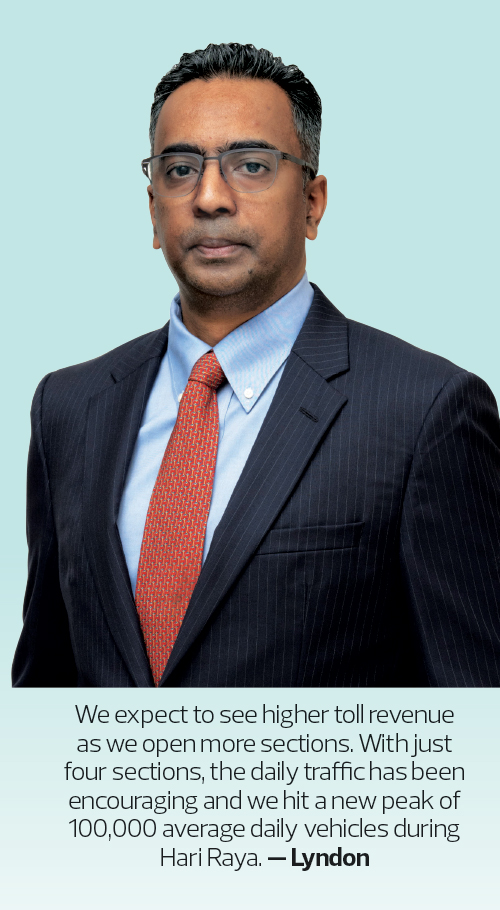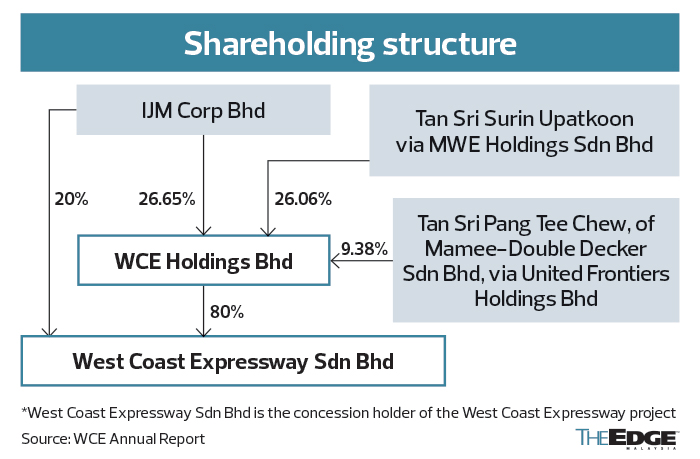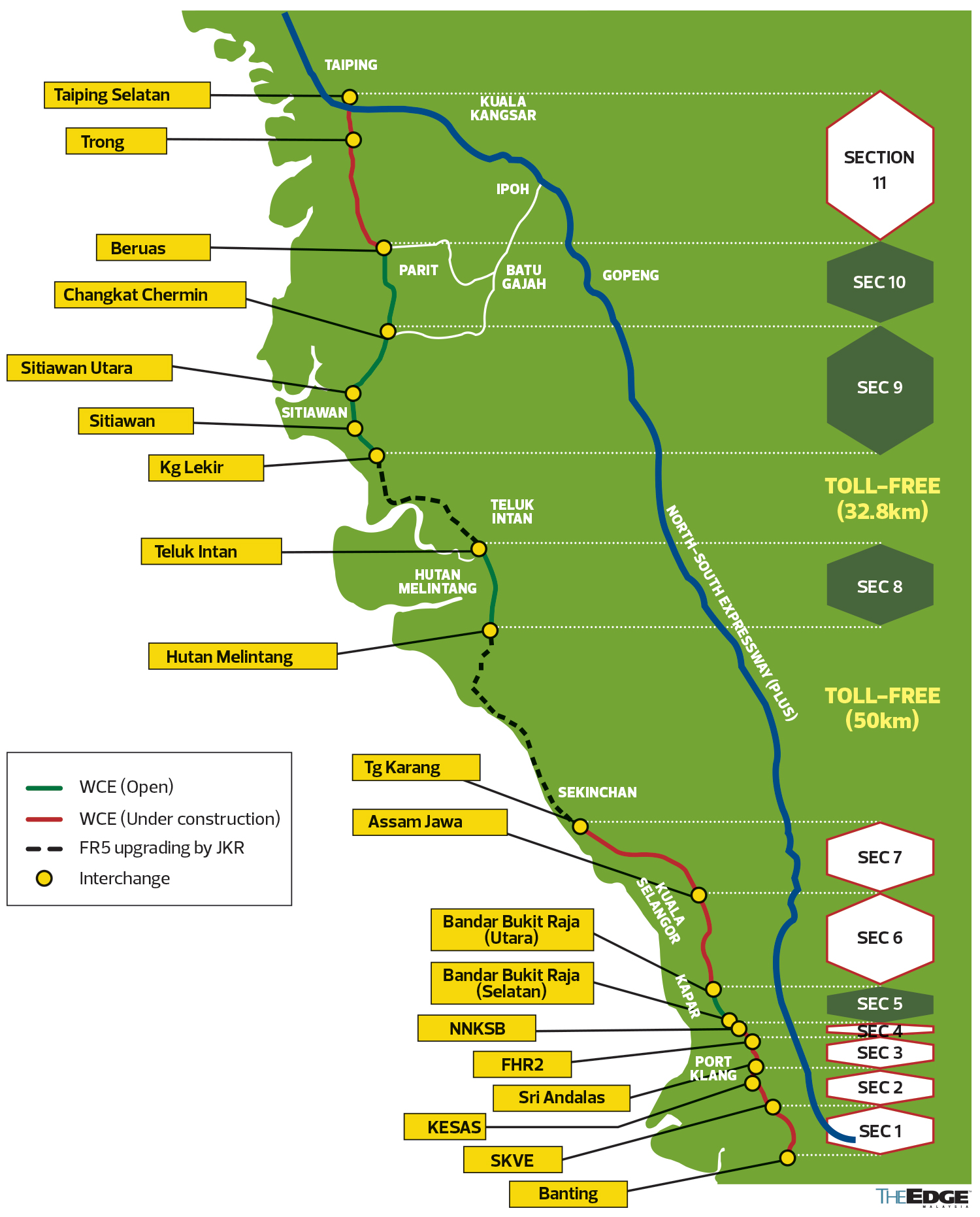
This article first appeared in The Edge Malaysia Weekly on May 8, 2023 - May 14, 2023
THE West Coast Expressway, a 233km toll highway connecting Banting in Selangor and Taiping in Perak, should have been completed three years ago, under its concession agreement signed in 2013.
However, it is only 86% completed, with only four out of 11 sections open to traffic.
Back then, the concession agreement was criticised because the tenure was 60 years — then the longest ever in Malaysia. It is also the highway that is taking the longest time to build.
Construction work, which had not been expected to be technically challenging, started in mid-2014. Somehow, the multi-billion ringgit infrastructure project, which was first proposed in the late 1990s, faced myriad issues from day one. Apart from underperforming contractors and funding issues, thorny problems ranged from disputes over land acquisition, changes in political leadership, alignment amendments and escalating costs.
Nonetheless, the worst is over now, according to WCE Holdings Bhd CEO Lyndon Alfred Felix. The company holds an 80% stake in the concessionaire West Coast Expressway Sdn Bhd (WCE SB) and shareholders who invested in the company hoping for steady dividends from toll income now have a flicker of hope of better prospects ahead.
The remaining 20% in WCE SB is held by IJM Corp Bhd, which also owns a 26% stake in the public-listed WCE. The other shareholders of WCE are MWE Holdings Bhd (25%) and United Frontiers Holdings Ltd (9%). MWE is owned by Tan Sri Surin Upatkoon, while United Frontiers is owned by Tan Sri Pang Tee Chew of Mamee Double Decker Sdn Bhd.
IJM Corp, the key contractor building the highway, has an effective 40.8% stake in the concessionaire. Hence, the completion of the highway is also crucial to the construction giant.
Lyndon tells The Edge that the highway will be fully completed by end-2024. “We foresee that the pickup in traffic growth could grow exponentially when the West Coast Expressway is fully opened, especially with its having connectivity with existing major highways including the North–South Expressway, Shah Alam Expressway Shah Alam Expressway (KESAS), South Klang Valley Expressway (SKVE) and KL-Kuala Selangor Expressway (LATAR).”
Lyndon, who was seconded from IJM Corp nine years ago, points out that traffic volume in the four sections that are open has been encouraging and within target, averaging 50,000 to 60,000 vehicles daily.
Lyndon has been a director of WCE SB since April 2014.
“For this year, we are targeting to open another four sections — three in Selangor (Sections 1, 2 and 6) and the final stretch for the Perak portion from Beruas to Taiping (Section 11), which will have a connection to the NSE via the Changkat Jering interchange.
“We expect to see higher toll revenue as we open more sections. With just four sections, the daily traffic has been encouraging and we hit a new peak of 100,000 average daily vehicles during Hari Raya,” he comments, noting that WCE is also working on ancillary revenue from development along the expressway, including petrol stations and rest stops.
However, he declines to comment on when WCE will break even. Typically, it takes about five to seven years for toll concessionaires to break even.
With more visibility from the completion of the sections of the expressway and expectations of profitability, WCE’s shares have attracted investor interest. Since the start of the year, its share price has risen more than 67% to 53.5 sen apiece last Friday, translating into a market capitalisation of RM1.6 billion.
However, it might be too early to talk about profit. Indeed, there is concern whether WCE needs to raise more funds to complete the project, thanks to the cost overruns.
Loss-making in the early years
The Malaysian Financial Reporting Standard (MFRS) 123 on Borrowing Costs states that an entity shall cease capitalising borrowing costs when all the activities necessary to prepare the qualifying asset for its intended use are substantially completed.
This means that interest expense is capitalised as part of the infrastructure development expenditure before the completion of the expressway.
Upon the completion of sectional construction, the interest expenses for these sections will be charged to the profit and loss account. This is reflected in the wider loss after tax of RM143.25 million in the financial year ended March 31, 2022 (FY2022) despite toll operations having started, versus RM120.49 million FY2021.
In view of that, WCE states in its latest annual report that it is expected to incur losses in the early years of toll operations due to “the cessation of capitalisation of interest expenses for completed sections and the non-cash expenditure in respect of the amortisation of infrastructure development expenditure”.
The project was funded via a RM2.24 billion government loan with an interest rate of 4% per annum, a RM1 billion sukuk, a RM1.5 billion term loan and RM1.2 billion from the sale of shares.
Apart from escalated land acquisition costs, WCE incurred extra construction costs due to the delay, in addition to RM5.04 billion construction costs and RM900 million in interest costs.
Lyndon is tight-lipped when asked about the magnitude of the additional costs for the construction works.
Last October, WCE obtained from the government a RM400 million loan at an interest rate of 1% per annum under a reimbursable land cost (RLC) financing agreement with the Ministry of Finance.
When asked if WCE needs to raise more funds to complete the project, Lyndon replies that the company has no plans for this at this time, noting that the divestment of its stake in Bandar Rimbayu will be sufficient to cover the additional costs. Last November, WCE sold 40% of its stake in the Bandar Rimbayu development for RM494 million to its major shareholder unit IJM Properties Sdn Bhd.
With the cash from the sale and the new loan from the government, as well as the expected toll collection from the four new sections, Lyndon, an accountant by training, believes the group will have sufficient financial resources to complete the highway.
“We have put whatever we can to keep the project running, but the land acquisitions were beyond our expectations. “The government wants to see this project go through as it has also given us RM2.24 billion in a support loan and RM980 million to cover land acquisition, it can’t let this project fail. We are not asking the government to foot the entire bill, we also showed them our commitment to this project and what we have to fork out,” he says.
He acknowledges that the company has underestimated the complexity of the land acquisitions, especially in Selangor. “In Selangor, the land is divided into small plots and there are also differences between the federal government’s estimated price and prices asked by landowners.”
Under the concession agreement between WCE and the federal government, the first RM980 million for land acquisition would be borne by the government. The remaining amount is to be absorbed by WCE. “But land acquisition costs have ballooned to RM2.2 billion,” Lyndon says.
That has raised the total cost of the expressway to more than RM8 billion, including land acquisition costs of RM2.2 billion and construction costs of RM5.94 billion, which also consists of interest expenses of RM900 million. The initial budget for the project was RM5.9 billion, excluding land acquisition costs of RM980 million.
Having said that, WCE is contesting the valuation of some of the land in court. “If we win any of the cases, we will use it to address any shortfalls that we have with the project. We are hopeful to get at least RM100 million from the cases,” says Lyndon, adding that the legal wrangling will not disrupt construction works in Selangor.
Worrying debt level
Although WCE’s earnings outlook looks a bit brighter, it is debt laden, with its borrowings having ballooned over the years to RM4.11 billion as at Dec 31, 2022, against a shareholder equity fund of RM949.37 million. Its cash pile, meanwhile, stood at RM620.42 million. These translated to a net gearing of 3.7 times.
Its finance cost amounted to RM117.39 million for the first nine months to Dec 31, 2022.
In FY2022, WCE recognised interest expenses of RM143 million and RM149.7 million in FY2021.
Lyndon admits that WCE needs to restructure its loans once the highway is completed. “Once we complete the whole project, we need to relook at our projection. We are continuously in discussions with the government on how we can restructure our loans and to address the toll rate discrepancy.”
He adds that the group expects to manage its operating expenses from the toll collections moving forward. He is optimistic that the West Coast Expressway would attract users despite having higher toll rates than the NSE, which he says is about at least 20% lower.
It is worth noting that the expressway concession agreement was signed prior to the 18% toll rate discount given to all PLUS Malaysia Bhd highways, including the NSE, by the Pakatan Harapan government in 2020.
The discount, which was not factored into West Coast Expressway’s concession agreement, could adversely impact the usage of the highway as it runs adjacent to the NSE, which is also known as the PLUS Expressway.
“There are many schools of thought on this — to save time or to save money. Our highway is on the coastal line, which is flatter and shorter. It also gives users the option to skip the Menora Tunnel on the NSE, which is an accident-prone area. I believe the congestion on the NSE could also flow some traffic onto our highway.
“The West Coast Expressway also has better connectivity to Port Klang and Lumut Port, which is attractive to commercial vehicles,” Lyndon says, noting that 30% of the current users of the highway are commercial vehicles.
After a decade-long wait, WCE shareholders and motorists are certainly looking forward to the completion of the alternative northbound route.
Save by subscribing to us for your print and/or digital copy.
P/S: The Edge is also available on Apple's App Store and Android's Google Play.




